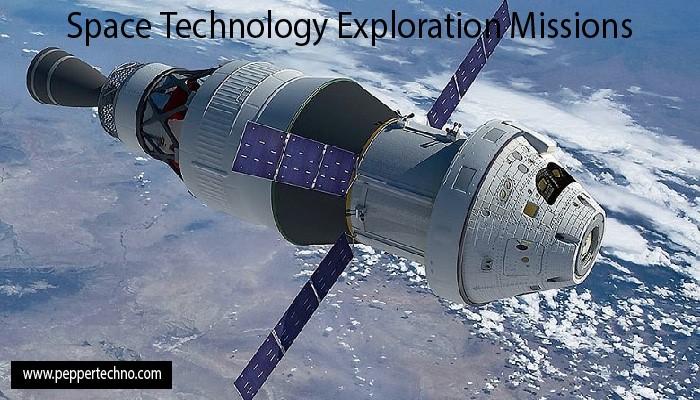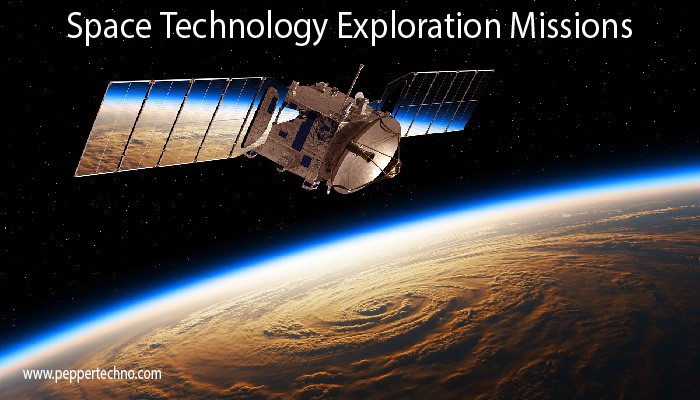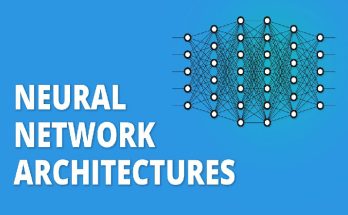The Future of Space Technology Exploration Missions
Embarking on a journey beyond our earthly confines, space technology exploration missions are the epitome of human innovation and curiosity. From the vast unknown of the universe to the potential for groundbreaking discoveries, space exploration holds the key to unlocking mysteries that have fascinated us for centuries. Join us as we delve into the future of space technology exploring missions and its impact on humanity’s quest for knowledge and discovery.

Current State of Space Exploration
The current state of space exploration is nothing short of awe-inspiring. With advancements in technology, we have been able to push the boundaries of what was once thought impossible. From sending rovers to Mars to exploring the mysteries beyond our solar system, we are truly living in a golden age of space discovery.
Private companies like SpaceX and Blue Origin have revolutionized the industry by developing reusable rocket technology, making space travel more affordable and accessible than ever before. NASA continues to lead the way with groundbreaking missions like the Perseverance rover on Mars and plans for future manned missions to the Moon and beyond.
As we look towards the future, collaborations between international space agencies and private companies will be crucial in advancing our understanding of the universe. The possibilities are endless, and it’s an exciting time to be alive witnessing humanity’s quest for knowledge among the stars.
Advancements in Rocket Technology
Rocket technology has rapidly evolved over the years, propelling humanity further into the cosmos. Engineers and scientists are continuously pushing boundaries to make space exploration more efficient and cost-effective.
Advancements in materials science have led to the development of lighter yet stronger rocket components, allowing for increased payload capacity and longer missions. Innovative propulsion systems like ion engines are making deep space travel more feasible by providing sustained thrust over extended periods.
Reusable rocket technology pioneered by companies like SpaceX is revolutionizing the industry by significantly reducing launch costs. The ability to land and reuse rockets not only makes missions more affordable but also paves the way for frequent access to space.
Innovations in aerodynamics and design have improved rocket performance, enabling faster travel times and greater maneuverability. These advancements are crucial for future ambitious missions beyond Earth orbit, such as crewed expeditions to Mars.
The Race to Mars: SpaceX vs NASA
The race to Mars is heating up as both SpaceX and NASA are pushing the boundaries of space exploration. SpaceX, founded by Elon Musk, has ambitious plans to establish a human colony on the Red Planet. With its reusable Falcon rockets and groundbreaking Starship spacecraft, SpaceX aims to make Mars travel more affordable and sustainable.
On the other hand, NASA also has its sights set on Mars with its Artemis program that aims to land humans on the Moon before venturing further into deep space. Collaborating with international partners, NASA is working towards developing new technologies for long-duration space missions that will pave the way for eventual crewed missions to Mars.
Both SpaceX and NASA bring unique strengths to the table – from innovative rocket technology to extensive experience in space exploration. While they may be competitors in this race, their collective efforts are driving humanity closer towards realizing the dream of interplanetary travel.
Robotic Missions vs Human Missions
As space technology continues to advance, the debate between robotic missions and human missions becomes more prominent. Robotic missions have proven to be efficient in gathering data and conducting experiments in environments too harsh for humans. They are cost-effective and reduce the risk to human life.
On the other hand, human missions bring a unique perspective as astronauts can adapt on-site, troubleshoot unforeseen challenges, and make decisions based on intuition and experience. The element of human exploration ignites public interest like no robot ever could.
While robots excel in repetitive tasks and extreme conditions, humans offer creativity, adaptability, and emotional connection to space exploration. Finding a balance between these two approaches is crucial for maximizing the potential of future space missions.
The Role of Artificial Intelligence in Space Technology
Artificial intelligence (AI) is revolutionizing the field of space technology, enhancing capabilities beyond human capacity. AI algorithms analyze vast amounts of data collected from space missions to make real-time decisions and optimize processes. From autonomous spacecraft navigation to predictive maintenance of equipment, AI plays a crucial role in ensuring the success and safety of space exploration missions.
One significant application of AI in space technology is in robotic missions. Robots equipped with AI can perform tasks that are too risky or tedious for humans, such as exploring distant planets or repairing satellites autonomously. These advancements not only increase efficiency but also reduce costs associated with sending manned missions into space.
Moreover, AI assists in interpreting complex data patterns from telescopes and satellites to discover new celestial phenomena or potential habitable exoplanets. By leveraging machine learning algorithms, scientists can unlock secrets of the universe at an unprecedented pace.
As we venture further into outer space, integrating artificial intelligence into our spacecraft systems will be vital for overcoming challenges and achieving breakthroughs in our understanding of the cosmos.
Challenges and Risks of Future Space Missions
Embarking on future space missions comes with a myriad of challenges and risks that must be carefully navigated. The harsh environment of space poses threats to both equipment and human explorers alike. From extreme temperatures to cosmic radiation, the conditions outside our planet are unforgiving.
One of the biggest hurdles is the long duration of space travel. Astronauts face physical and mental health issues due to extended periods in microgravity, which can impact their well-being and performance during missions. Additionally, the reliance on complex technology leaves little room for error, as even a minor malfunction could have catastrophic consequences.
Furthermore, the vast distances involved in interplanetary travel present logistical challenges in terms of resource management and communication delays. Mission planners must account for these factors to ensure the success and safety of each journey into the unknown.
Collaborative Efforts: International Space Agencies and Private Companies
The collaboration between international space agencies and private companies has been pivotal in advancing space technology exploration missions. By combining resources, expertise, and innovation, these partnerships have propelled the boundaries of what is possible in outer space.
International space agencies like NASA, ESA, Roscosmos, and ISRO bring decades of experience and scientific knowledge to the table. Their contributions in research, funding, and infrastructure play a crucial role in launching successful missions beyond Earth’s atmosphere.
On the other hand, private companies such as SpaceX, Blue Origin, and Virgin Galactic bring a fresh perspective with their cutting-edge technology and entrepreneurial spirit. Their agility and drive for efficiency have revolutionized the way we approach space exploration.
Together, these collaborations aim to push humanity further into the cosmos while fostering competition that drives progress forward. As we look towards future missions to Mars and beyond, it is clear that only through partnership can we achieve our boldest dreams of exploring the unknown depths of outer space.
Impact on Society and Earth’s Sustainability
The impact of space technology exploration missions goes beyond the boundaries of our planet. The advancements in this field not only inspire future generations but also drive innovation and technological progress here on Earth. By pushing the limits of what is possible, space missions challenge us to think creatively and develop solutions for complex problems.
Moreover, these missions have a direct impact on Earth’s sustainability. Space technologies provide valuable data on climate change, natural disasters, and resource management that can help us make informed decisions to protect our planet. From monitoring deforestation to tracking pollution levels, space technology plays a crucial role in ensuring the long-term health of our environment.
Furthermore, collaborations between international space agencies and private companies foster global cooperation and knowledge sharing. By working together towards common goals in space exploration, we not only advance scientific discovery but also promote unity among nations for the greater good of humanity.
Conclusion
As we look towards the future of space technology exploration missions, it’s evident that we are on the brink of unprecedented advancements. With ongoing developments in rocket technology, the race to Mars between SpaceX and NASA, the integration of artificial intelligence, and collaborative efforts between international space agencies and private companies, the possibilities for exploring beyond our planet are endless.
While there are challenges and risks associated with venturing into space, from radiation exposure to long-duration missions, these obstacles continue to be overcome through innovation and determination. The impact of space exploration extends far beyond scientific discovery; it inspires generations, fosters international cooperation, and pushes technological boundaries that benefit society as a whole.
In this era of rapid advancements in space technology, one thing remains certain: humanity’s drive to explore the unknown will continue to propel us towards new frontiers in understanding our place in the universe. Let us embrace this exciting journey ahead as we reach for the stars together.



